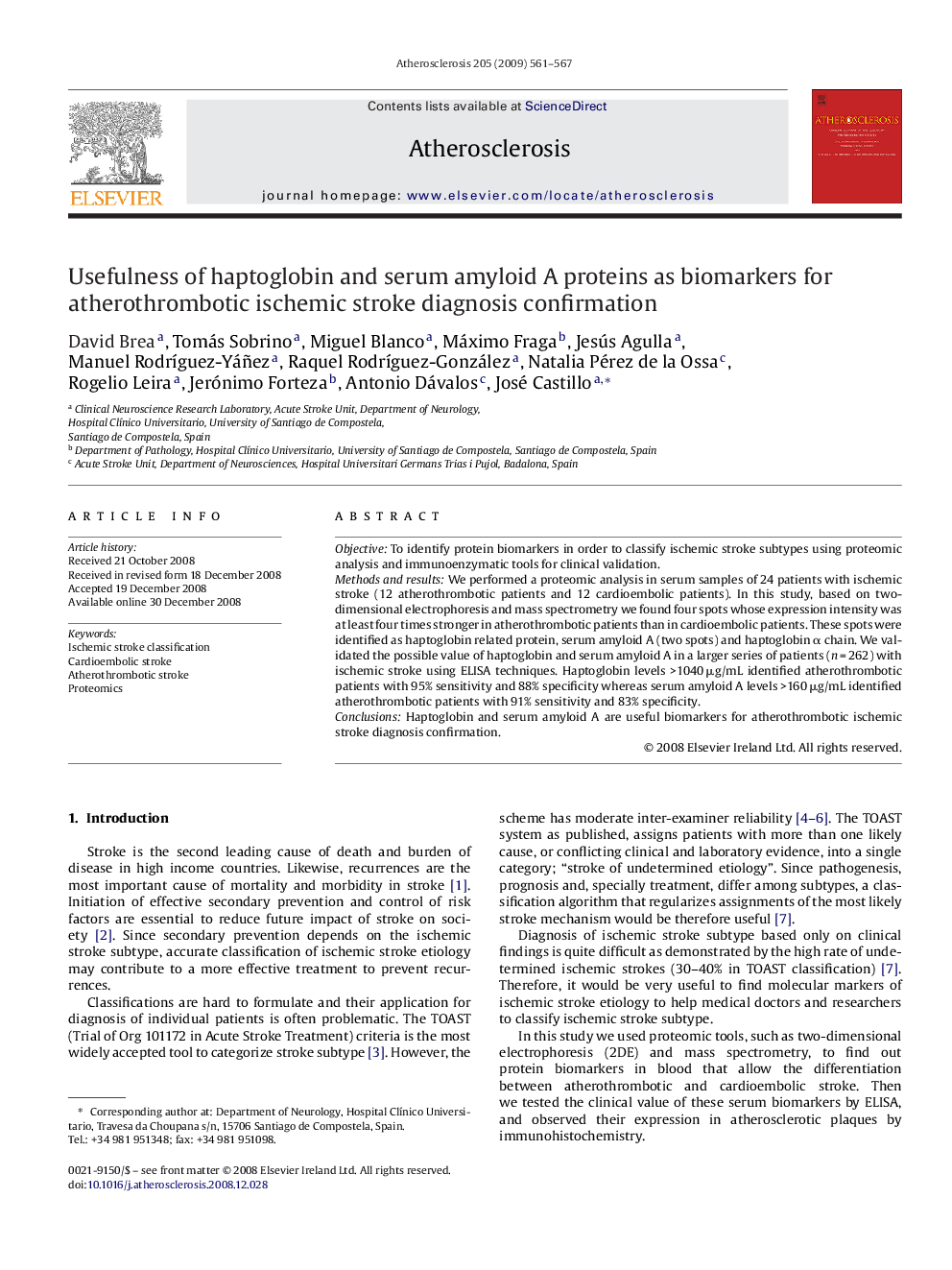| Article ID | Journal | Published Year | Pages | File Type |
|---|---|---|---|---|
| 2893575 | Atherosclerosis | 2009 | 7 Pages |
ObjectiveTo identify protein biomarkers in order to classify ischemic stroke subtypes using proteomic analysis and immunoenzymatic tools for clinical validation.Methods and resultsWe performed a proteomic analysis in serum samples of 24 patients with ischemic stroke (12 atherothrombotic patients and 12 cardioembolic patients). In this study, based on two-dimensional electrophoresis and mass spectrometry we found four spots whose expression intensity was at least four times stronger in atherothrombotic patients than in cardioembolic patients. These spots were identified as haptoglobin related protein, serum amyloid A (two spots) and haptoglobin α chain. We validated the possible value of haptoglobin and serum amyloid A in a larger series of patients (n = 262) with ischemic stroke using ELISA techniques. Haptoglobin levels >1040 μg/mL identified atherothrombotic patients with 95% sensitivity and 88% specificity whereas serum amyloid A levels >160 μg/mL identified atherothrombotic patients with 91% sensitivity and 83% specificity.ConclusionsHaptoglobin and serum amyloid A are useful biomarkers for atherothrombotic ischemic stroke diagnosis confirmation.
